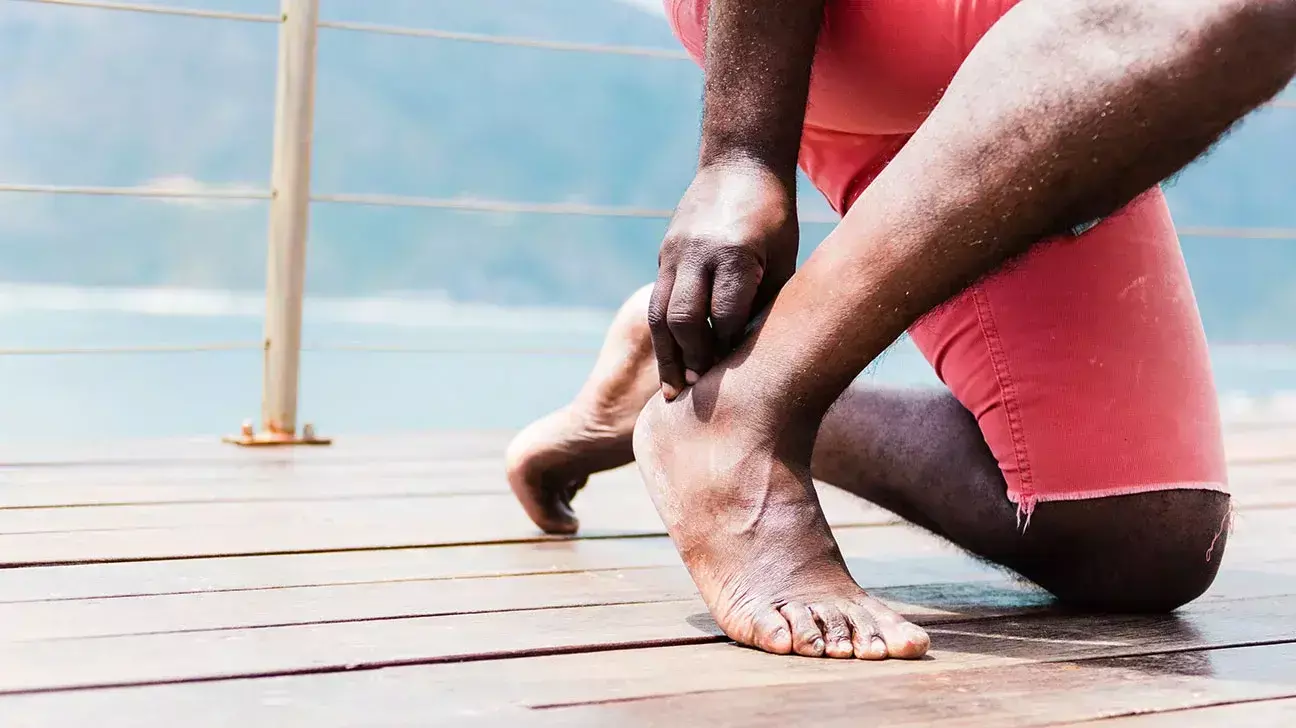- Home
- Medical news & Guidelines
- Anesthesiology
- Cardiology and CTVS
- Critical Care
- Dentistry
- Dermatology
- Diabetes and Endocrinology
- ENT
- Gastroenterology
- Medicine
- Nephrology
- Neurology
- Obstretics-Gynaecology
- Oncology
- Ophthalmology
- Orthopaedics
- Pediatrics-Neonatology
- Psychiatry
- Pulmonology
- Radiology
- Surgery
- Urology
- Laboratory Medicine
- Diet
- Nursing
- Paramedical
- Physiotherapy
- Health news
- Fact Check
- Bone Health Fact Check
- Brain Health Fact Check
- Cancer Related Fact Check
- Child Care Fact Check
- Dental and oral health fact check
- Diabetes and metabolic health fact check
- Diet and Nutrition Fact Check
- Eye and ENT Care Fact Check
- Fitness fact check
- Gut health fact check
- Heart health fact check
- Kidney health fact check
- Medical education fact check
- Men's health fact check
- Respiratory fact check
- Skin and hair care fact check
- Vaccine and Immunization fact check
- Women's health fact check
- AYUSH
- State News
- Andaman and Nicobar Islands
- Andhra Pradesh
- Arunachal Pradesh
- Assam
- Bihar
- Chandigarh
- Chattisgarh
- Dadra and Nagar Haveli
- Daman and Diu
- Delhi
- Goa
- Gujarat
- Haryana
- Himachal Pradesh
- Jammu & Kashmir
- Jharkhand
- Karnataka
- Kerala
- Ladakh
- Lakshadweep
- Madhya Pradesh
- Maharashtra
- Manipur
- Meghalaya
- Mizoram
- Nagaland
- Odisha
- Puducherry
- Punjab
- Rajasthan
- Sikkim
- Tamil Nadu
- Telangana
- Tripura
- Uttar Pradesh
- Uttrakhand
- West Bengal
- Medical Education
- Industry
Ankle-GO score valid and robust score to predict return to sport in patients after lateral ankle sprain: Study

Lateral ankle sprain (LAS) is the most common sports-related injury. However, there are currently no published evidence-based criteria to guide the patient’s return to sport (RTS) and this decision is generally time-based.
Picot et al conducted a study to assess the psychometric properties of a new score (Ankle-GO) and its predictive ability for RTS at the same level of play after LAS. The article has been published in ‘Sport health’ journal.
The Ankle-GO was administered to 30 healthy participants and 64 patients at 2 and 4 months after LAS. The score was calculated as the sum of 6 tests for a maximum of 25 points. Construct validity, internal consistency, discriminant validity, and test-retest reliability were used to validate the score. The predictive value for the RTS was also validated based on the receiver operating characteristic (ROC) curve.
Ankle-GO is a composite score based on the sum of 7 components for an objective evaluation of the main deficits associated with LAS or CAI and which can result in a risk of reinjury.It was calculated from 4 functional tests: the single leg stance test (SLS) on a firm surface, the modified star excursion balance test (mSEBT), the side hop test (SHT), and the figure-of-8 test (F8T). In addition, 2 patient self-reported questionnaires were used: the Foot and Ankle Ability Measure, involving 2 subscales evaluating activities in daily life (FAAM adl) and sports (FAAMsport ), and the Ankle Ligament Reconstruction- Return to Sport after Injury (ALR-RSI).
Key findings of the study were:
• The internal consistency of the score was good (Cronbach’s alpha coefficient of 0.79) with no ceiling or floor effect.
• Test-retest reliability was excellent (intraclass coefficient correlation = 0.99) with a minimum detectable change of 1.2 points.
• The 2-month scores were significantly lower than 4-month and control group scores (7.7 ± 4, 13.9 ± 4.6, and 19.6 ± 3.4 points, respectively, P < 0.01).
• Ankle-GO values were also significantly higher in patients who returned to their preinjury level at 4 months compared with those who did not (P < 0.01).
• The predictive value of the 2-month Ankle-GO score was fair for a RTS at the same or higher than preinjury level at 4 months (area under ROC curve, 0.77; 95% CI, 0.65-0.89; P < 0.01).
Clinical Relevance: Ankle-GO is the first objective score to help in the decision-making of the RTS after LAS. At 2 months, patients with an Ankle-GO score <8 points are unlikely to RTS at the same preinjury level.
The authors concluded that – “Ankle-GO is a valid and reliable score when assessing patients after LAS during the RTS continuum. This inexpensive clinical tool composed of functional test and self-reported questionnaires seems relevant to discriminate and predict the level of RTS. At 2 months after injury, a patient exhibiting an Ankle-GO score <8 points are unlikely to resume at the same preinjury level at 4 months.”
Prospective diagnostic study Level of Evidence: Level 2. Key Words: ankle sprain, decision, functional testing, psychological readiness, return to sport, Picot et al, SPORTS HEALTH, Ankle-GO Score.
Further reading: Development and Validation of the Ankle-GO Score for Discriminating and Predicting Return-to-Sport Outcomes After Lateral Ankle Sprain Picot et al SPORTS HEALTH DOI: 10.1177/19417381231183647
MBBS, Dip. Ortho, DNB ortho, MNAMS
Dr Supreeth D R (MBBS, Dip. Ortho, DNB ortho, MNAMS) is a practicing orthopedician with interest in medical research and publishing articles. He completed MBBS from mysore medical college, dip ortho from Trivandrum medical college and sec. DNB from Manipal Hospital, Bengaluru. He has expirence of 7years in the field of orthopedics. He has presented scientific papers & posters in various state, national and international conferences. His interest in writing articles lead the way to join medical dialogues. He can be contacted at editorial@medicaldialogues.in.


